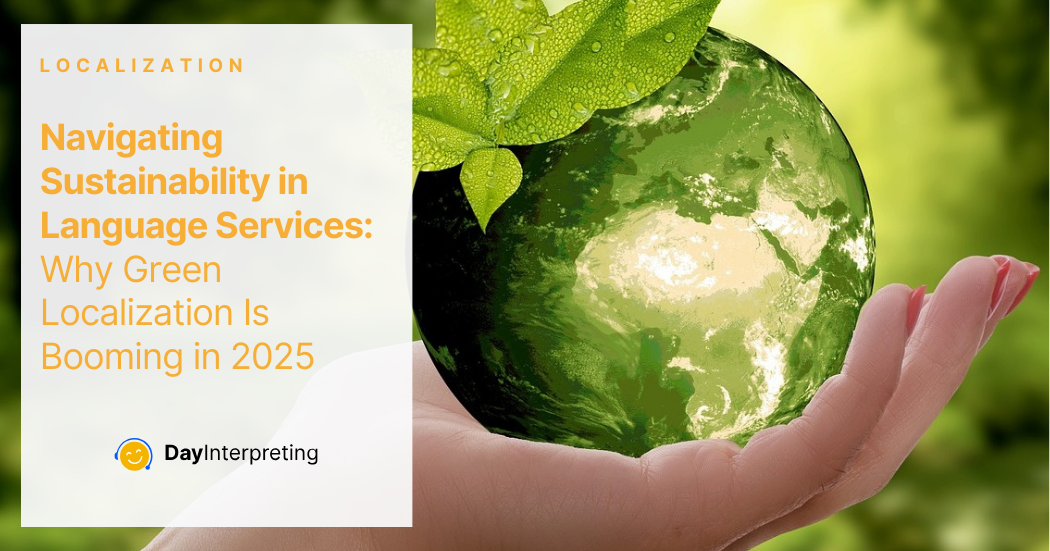As demand for multilingual content grows, a quieter, but critically important, trend is gaining traction: sustainable localization. In 2025, Language Service Providers (LSPs) and interpreting firms are increasingly adopting eco-conscious practices to reduce their environmental impact. Here’s why “green localization” is trending now, where sustainability in language services is heading, and what it means for your interpreting business.
Why Sustainability in Language Services Matter
Training large language models can be astonishingly energy-intensive, GPT-3, for instance, uses over 1,200 MWh of energy to train, akin to the power of 330 U.S. homes for a year. However, many LSPs still rely on paper-heavy workflows and on-premise servers.
The environmental cost is prompting a shift toward low-impact operations that clients increasingly prioritize.
Green Localization in Action
- Cloud-Based Collaboration
Many providers are migrating from local servers to cloud platforms like AWS and Google Cloud, which reduce energy usage by 30–50%. - Efficient AI Models
Techniques such as model quantization shrink AI model sizes, cutting inference energy needs by up to 60%. - Paperless Processes
LSPs are ditching physical documents and adopting digital style guides and CAT tool workflows. In the EU, this shift has eliminated 12 million pages of paper waste annually. - Sustainability Reporting
The EU’s Corporate Sustainability Reporting Directive now requires companies to disclose localization-related emissions, such as “carbon per translated word.” This opens the door for “Green Localization Certification” as well.
What Interpreters and LSPs Should Know About Sustainability in Language Services
1. Integrate Green Practices into Your Workflow
Optimize your infrastructure:
- Choose cloud services over energy-hungry local servers.
- Use lighter AI models or limit batch processing outside peak times.
- Convert internal guides, glossaries, and workflows to 100% digital formats.
2. Track Emissions and Process Efficiency
Begin tracking indicators like energy use and document volume. Even basic metrics (e.g., hours spent editing large files or paper usage) can form the basis of a sustainability overview.
3. Promote Sustainability to Stakeholders
Clients, especially those in corporate social responsibility sectors, may prioritize vendors who align with their own sustainability goals. Promote your green practices in proposals and marketing.
4. Pursue Green Localization Certification
Look into emerging certifications that audit your carbon footprint, e-waste policy, and energy practices. This demonstrates commitment and can differentiate your brand.
5. Champion Eco-Conscious Interpreting at Events
At conferences or interpreting events, lean into sustainability:
- Opt for digital delivery of materials.
- Limit printouts in favor of apps.
- Encourage virtual attendance to reduce travel-related emissions.
Final Thought: Why Green Localization Matters Today
Going green isn’t just trendy, it’s becoming fundamental. In 2025, with AI’s energy demands under scrutiny and regulatory frameworks tightening, sustainability is no longer optional, it’s essential.
For interpreters and language service providers, embracing green localization is both a long-term strategy and a timely differentiator. By committing to eco-conscious operations, your business won’t just reduce emissions, it will align with global sustainability goals while maintaining quality, relevance, and ethical responsibility.





0 Comments